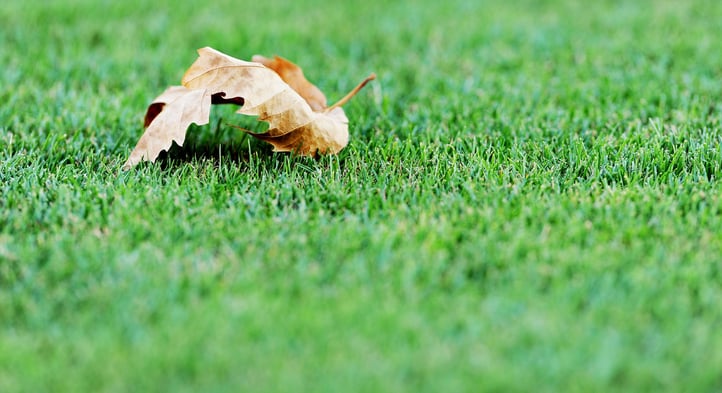
Fall is arguably the most photogenic season, and guess what? It's finally here!
The Fall months are well known for lots of earthy colours, pumpkin-flavoured everything, and crispy cool hoodie weather, but it's also a great time of year for lawn care. After a stressful Summer, all that cool weather translates to optimal growing conditions for your lawn. Addressing any damage done in Summer, preparing for a rough Winter, and setting yourself up for a successful Spring are all tasks that can be tackled in Fall.
Aerating your lawn and adding new seed are two such jobs that should be done at least annually. Scheduling both these services for the Fall will help you wrap up the growing season in good shape, and put your lawn in a good position come Spring.
Let's dive further into what these two services are, and how they benefit your lawn.
Aerating Your Lawn in Fall
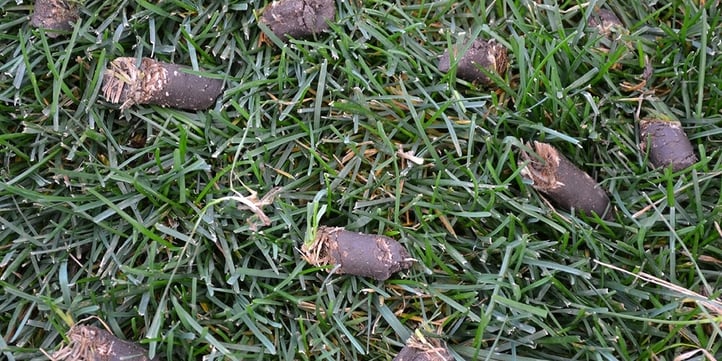
Performing a lawn aeration in Fall is incredibly beneficial for your lawn.
Using a special machine, small cores of soil about the size of your index finger are removed from the lawn, then left there to decompose.
Removing these cores works to relieve soil compaction - a common problem for residential lawns. Over time, foot traffic and increased pressure on the lawn results in hard, compacted soil. Since compacted soil doesn't allow much space for water and nutrients to penetrate the roots, aerating your lawn is something you should do at least annually to avoid it.
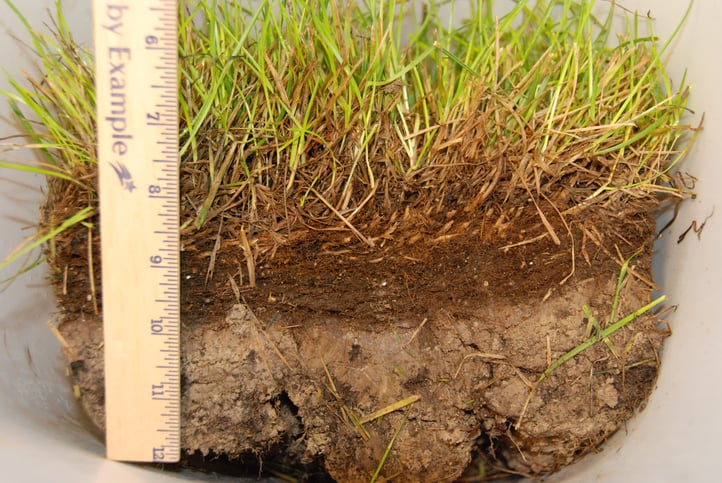
Aeration also helps remove excessive thatch from your lawn. Thatch is a layer of roots, stems, and organic material that sits between the grass and the soil. As with soil compaction, too much thatch inhibits water penetration, so it's a good idea to address this annually, too.
After your lawn has been aerated, there's a lot more room for water, air, and fertilizer to reach the root zone effectively. Your soil condition is key to growing good grass, so make sure you aerate at least once a year to help tackle soil compaction and thatch accumulation.
Adding New Seed in Fall
/overseed-twitter.png?width=722&height=361&name=overseed-twitter.png)
Fall overseeding is another such task that should be done once a year.
By adding new grass seed to your lawn in the Fall months, you can fill in damaged areas or bare patches, and thicken up the lawn before it goes into dormancy.
RELATED > Fall Seeding: What Are Your Options?
You can seed any areas by hand that need extra attention, but if you're looking to get precise and even application, it's best to use a broadcast spreader to evenly distribute the seed.
Even if your lawn is in reasonable shape, adding new seed each year is recommended, and Fall or Spring are good times to do it. Fall's beneficial growing conditions help ensure good seed germination, making establishment all the more successful. Just make sure you keep on top of watering, because if the seed dries, it dies.
Combining Core Aeration with Overseeding
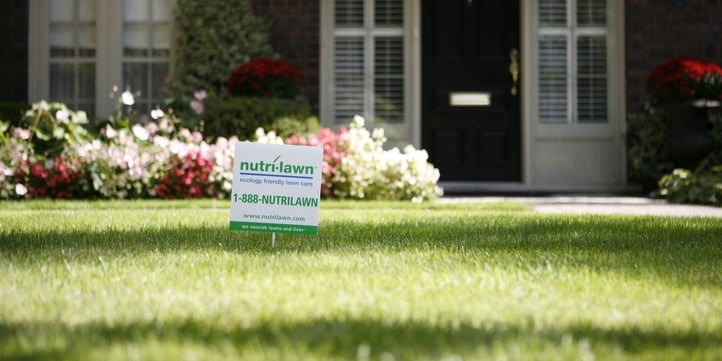
To maximize the benefits both services have to offer at once, combining a core aeration with overseeding is the way to go.
Overseeding a lawn after it has been aerated allows an open channel for seed to penetrate the soil and ensure optimal seed-to-soil contact.
Since the removed cores have helped relieve soil compaction and thatch accumulation, the new seed can germinate and establish itself much quicker. Oxygen and water are also able to be absorbed better, allowing for new, deeper roots and nutrient rich soil.
By prioritizing seed-to-soil contact with a combined aeration and overseeding service, you're making the most of both services and giving your grass it's best chance at growing thick, healthy and robust before Winter.
Follow us on Facebook or Pinterest for more lawn care tips and tricks.

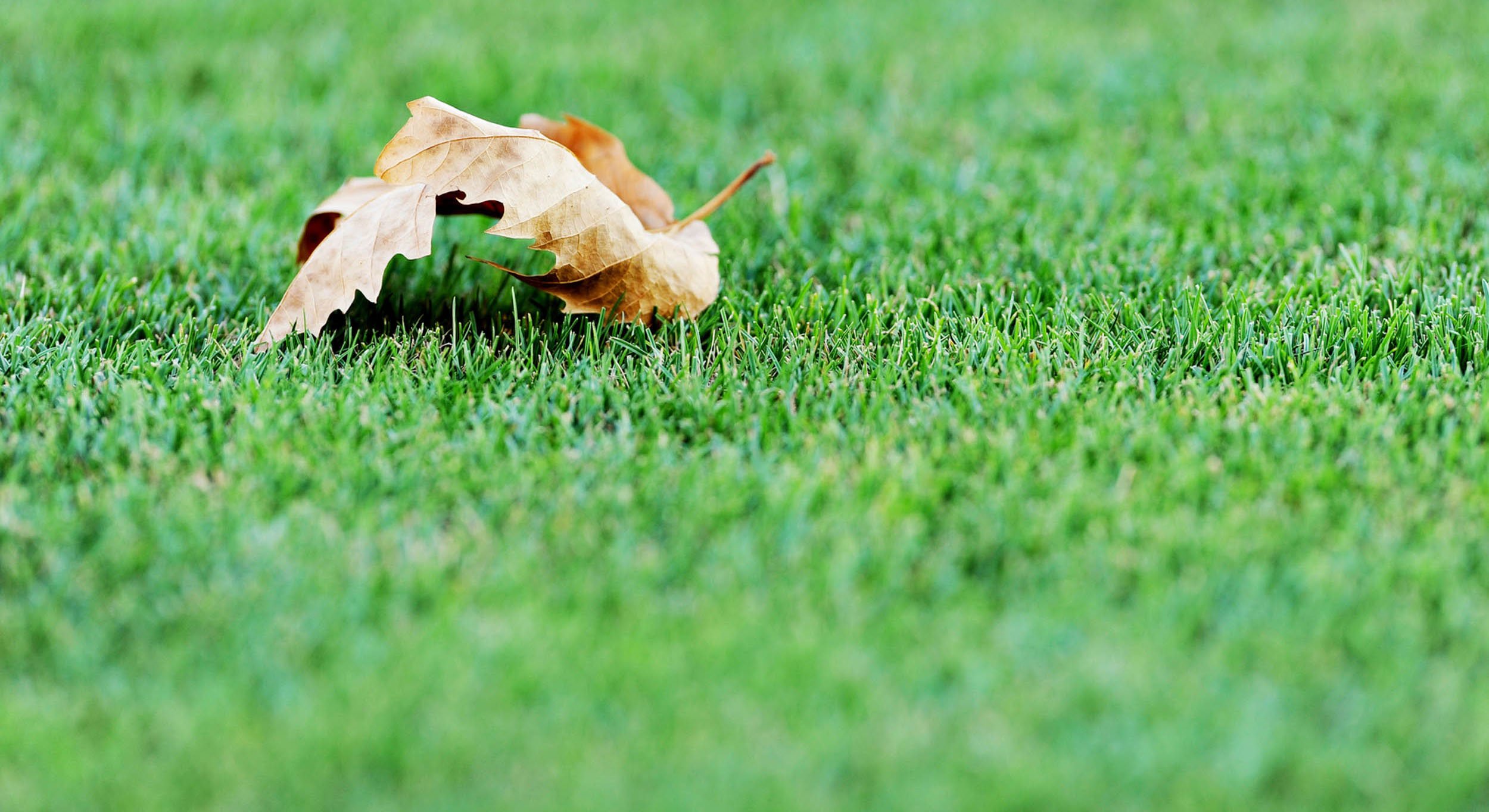






/overseed-twitter.png?width=722&height=361&name=overseed-twitter.png)

